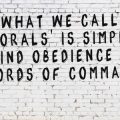1. Understanding Skepticism: Why We Doubt Our Intuition
Many people in America find themselves questioning their intuitive feelings, even when those hunches turn out to be right. Before you can trust your intuition, it helps to understand why skepticism is so common and where it comes from. Let’s explore some of the key reasons people doubt their intuitive abilities.
Cultural Influences on Intuition
In American society, there’s a strong emphasis on logic, facts, and scientific proof. From an early age, kids are taught that the best decisions are made with careful analysis and evidence. While this mindset has many benefits, it can make us skeptical about anything that doesn’t fit neatly into logical boxes—including our own gut instincts.
How Culture Shapes Our View of Intuition
| Influence | How It Impacts Intuition |
|---|---|
| Education System | Focuses on critical thinking and measurable results; intuition often gets overlooked or dismissed. |
| Media & Entertainment | Portrays psychics or “seers” as mysterious or even fake, feeding public doubt. |
| Workplace Norms | Values data-driven decision making over “gut feelings,” especially in corporate settings. |
| Social Expectations | Praise for being “rational” and “level-headed” rather than intuitive or emotional. |
Personal Experiences That Shape Doubt
Skepticism isn’t just cultural—it’s personal too. Maybe you’ve ignored a hunch and regretted it later, or perhaps you trusted your gut and things didn’t work out. These experiences can lead to self-doubt and second-guessing.
Common Personal Roadblocks to Trusting Intuition
- Past Mistakes: Bad outcomes after following intuition can make us hesitant next time.
- Lack of Validation: If friends or family dismiss your feelings, you may start to do the same.
- Fear of Being Wrong: Worrying about judgment or embarrassment if your instincts don’t pan out.
- Need for Approval: Wanting others to agree with your choices before trusting yourself.
The Value Placed on Logic in American Society
Logic is celebrated in America—think about all the TV shows featuring detectives, lawyers, and scientists who solve problems through reason and evidence. This high value placed on logic sometimes makes intuition seem unreliable by comparison. But intuition isn’t about ignoring logic; it’s another tool that helps us make sense of the world when information is incomplete or emotions run high.
2. The Science Behind Intuition: Facts, Myths, and Misunderstandings
Many people think intuition is just a mysterious gut feeling or even something supernatural. But did you know that science has been studying intuition for years? Let’s break down what researchers have discovered, clear up some common myths, and see how intuition really works in our daily lives.
What Is Intuition?
Intuition is often described as knowing or sensing something without logical reasoning. It’s that quick judgment you make without fully understanding why. Scientists believe it comes from our brain recognizing patterns based on past experiences, even if we’re not aware of it.
How Does Intuition Work?
When you face a new situation, your brain quickly compares it to things you’ve experienced before. If something feels “off,” your mind might be picking up on subtle cues you’ve learned to notice over time. This fast-track decision-making process can help you react quickly, especially in high-pressure moments.
Common Myths vs. Scientific Facts
| Myth | Fact |
|---|---|
| Intuition is magical or supernatural. | Intuition is rooted in the brain’s ability to process information quickly and unconsciously. |
| Only certain people are intuitive. | Everyone has intuitive abilities, though some may trust theirs more than others. |
| Intuitive decisions are always right. | Intuition can be helpful, but it’s not foolproof—biases and emotions can influence it. |
Research Findings on Intuition
Studies at universities like Princeton and Harvard show that our brains process information on two levels: the conscious (slow, logical thinking) and the subconscious (fast, intuitive thinking). For example, experienced firefighters often “just know” when a building is about to collapse—not because of psychic powers, but because they subconsciously recognize warning signs from years of experience.
How We Use Intuition Every Day
- Making Quick Decisions: Like choosing the fastest checkout line at the grocery store.
- Sensing Danger: Feeling uneasy about walking down a dark alley.
- Reading People: Picking up on someone’s mood without them saying a word.
The more you pay attention to these small signals, the stronger your intuition becomes. Remember, trusting your gut doesn’t mean ignoring logic—it means using all the tools your mind gives you for better decision-making every day.

3. Shifting Your Mindset: From Doubter to Believer
Understanding Limiting Beliefs About Intuition
Many people grow up believing that intuition is either a superpower or something only a few people have. In reality, everyone has intuitive abilities—they just look different for each person. If you’ve ever thought “I’m just not intuitive” or “Intuition isn’t real,” those are limiting beliefs holding you back from your full potential.
Common Limiting Beliefs and How to Reframe Them
| Limiting Belief | Reframed Thought |
|---|---|
| “Intuition is just guessing.” | “Intuition is another way my brain processes information.” |
| “I never get gut feelings.” | “I can learn to notice subtle signals from my body and mind.” |
| “It’s not scientific, so it doesn’t count.” | “Many professionals use intuition alongside logic and evidence.” |
| “If I trust my intuition, I’ll make mistakes.” | “Everyone makes mistakes, but trusting myself helps me grow.” |
Practical Strategies to Challenge Skepticism
Skepticism can be healthy—it keeps us curious and open to learning. However, too much skepticism can close us off from new experiences. Here are a few ways to gently challenge your own doubts:
- Keep an Intuition Journal: Write down moments when you had a hunch or gut feeling, then note what happened afterward. Over time, patterns may emerge that show your intuition in action.
- Experiment with Low-Stakes Decisions: Try making small daily choices—like what route to take or which coffee shop to visit—based on your initial instinct. Notice how things turn out and how you feel about the process.
- Ask Reflective Questions: When doubt arises, ask yourself: “What if my intuition is trying to help me?” or “How would I act if I trusted myself right now?” These questions open doors instead of closing them.
- Tune Into Your Body: Sometimes intuition shows up as physical sensations—a tight chest, butterflies in the stomach, or a sense of calm. Take a moment each day to scan your body and become familiar with these signals.
Opening Up to Your Inner Wisdom
The shift from doubter to believer doesn’t happen overnight. It’s about giving yourself permission to explore the unknown and trusting that your inner voice has value. By reframing your beliefs, challenging your skepticism in small ways, and practicing self-reflection, you’ll start noticing more intuitive insights in everyday life.
4. Building Trust in Yourself: Practical Tools to Strengthen Intuition
Developing trust in your intuition is a journey that involves self-awareness, practice, and consistency. Whether you’re just starting out or looking to deepen your intuitive skills, using everyday tools can make the process less mysterious and more approachable. Here are some proven, practical methods that fit right into American daily life and culture.
Journaling: Your Personal Intuition Log
Keeping a journal is one of the most effective ways to track your intuitive hits and understand how they play out in real life. By writing down your gut feelings, dreams, sudden insights, and the outcomes, you’ll begin to notice patterns. Over time, this helps you distinguish true intuition from random thoughts or anxieties.
| Step | How to Practice | Why It Helps |
|---|---|---|
| 1. Record Daily Impressions | Each morning or night, jot down any strong feelings or hunches you had during the day. | Keeps you aware of intuitive moments as they happen. |
| 2. Note Outcomes | After a week or month, look back and see what came true or proved helpful. | Builds confidence by showing accuracy over time. |
| 3. Reflect on Lessons | If something didn’t work out, ask yourself what you learned about listening (or not listening) to your instincts. | Makes intuition a learning tool rather than a guessing game. |
Mindfulness: Tuning Into Your Inner Voice
Mindfulness isn’t just for meditation gurus—it’s a simple way to slow down and get in touch with your thoughts and feelings. When you’re mindful, you’re better able to notice subtle nudges from within before outside noise drowns them out.
Simple Mindfulness Exercise:
- Breathe Deeply: Sit comfortably, close your eyes, and take 5 deep breaths.
- Notice Sensations: Pay attention to physical feelings—your heartbeat, warmth, tension.
- Check Your Gut: Ask yourself a question (“Should I take this job?”) and observe the first feeling or image that comes up without judging it.
- Write It Down: Jot down what came up in your journal for future reference.
Real-World Exercises: Practice Makes Progress
You don’t have to be psychic to use intuition in daily decisions. Try these hands-on activities to build trust in your instincts while going about normal routines:
| Exercise | Description | Cultural Fit |
|---|---|---|
| The Coffee Shop Choice | When ordering coffee, pause and tune into what feels right—maybe it’s trying something new instead of your usual order. Notice how satisfied you feel afterward. | Makes using intuition part of everyday American life—coffee runs included! |
| The Route Home Game | If you drive or walk home from work/school, let your gut pick the route—even if it’s not the fastest. Reflect on how the experience felt different. | Adds adventure to daily commutes; encourages small risk-taking in safe ways. |
| The People Watcher | Sit in a public space (like a park) and silently guess people’s moods or stories based on your impressions. Later compare if possible (through conversation or observation). | Taps into natural curiosity; fits with American people-watching culture. |
Building a Habit: Small Steps Every Day
The key is consistency—not perfection. Start with just one tool that feels comfortable and commit to practicing it every day for two weeks. Celebrate small wins when you notice your intuition was on point. Over time, these habits will help transform doubt into self-trust and make intuitive living feel like second nature.
5. Living Intuitively: Applying Your Inner Guidance Daily
Bringing Intuition Into Everyday Life
Learning to trust your intuition is just the first step—now it’s time to make it part of your daily routine. No matter where you are on your journey from skeptic to seer, everyone can benefit from simple, actionable strategies for using intuition in real-world situations. Whether you’re making decisions at home, navigating workplace challenges, or deepening personal relationships, your inner guidance can be a powerful ally.
Practical Tips for Using Intuition
| Area of Life | How to Weave in Intuitive Decision-Making |
|---|---|
| Personal Life |
|
| Workplace |
|
| Relationships |
|
Navigating Cultural and Individual Differences
Honoring diversity is essential when living intuitively. In American culture, some people value logical analysis while others are more open to “gut” decisions. Respect that not everyone will approach intuition the same way. If you’re working with people from different backgrounds, ask how they prefer to make decisions and share your own perspective without judgment. This helps build mutual trust and understanding, making space for everyone’s strengths—including intuitive ones.
Quick Reminders for Everyday Practice
- You don’t have to ignore facts—intuition works best alongside critical thinking.
- The more you practice listening to your inner voice, the stronger it gets.
- If you make a mistake by following your gut, use it as a learning opportunity—not proof that intuition “doesn’t work.”
- Check in regularly with yourself: Are you feeling rushed or pressured? Slow down so your intuition has room to speak up.
Building Trust in Your Intuitive Abilities Takes Time
Every day gives you new chances to listen, learn, and grow. By welcoming both doubts and insights with an open mind, you’ll find your unique balance between skepticism and seeing clearly with your inner wisdom. And remember: It’s okay if your journey doesn’t look like anyone else’s—that’s part of honoring who you are as you live intuitively each day.


